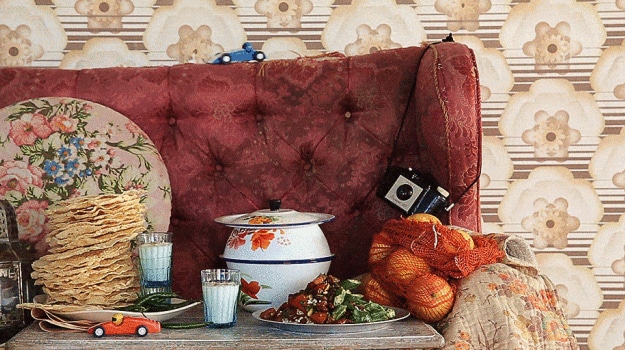The master of modern Indian cuisine would check out with a childhood feast
My last meal would be exactly like the meals I used to have with my brother, Vikas, and sisters Indu and Seema, in our childhood home in Jamshedpur. We’d cook together. Our father, Raj Kochhar, was in the catering business, and our grandfather was a baker, so we all helped with everything – cooking was in our veins.
I’d have red kidney-bean stew (Punjabi rajma masala), the way my mother, Sudesh, always makes it. It’s the most comforting anytime dish to have with rice or bread, some mango pickle and a side of potatoes with okra. Indians like to bite a raw green chilli with their meal, so we’d have some of those, and some black pepper poppadoms. To drink, we’d make Punjabi mattha – buttermilk with a pinch of salt and ground cumin.
We’d lay a makeshift table on the bed in one of our rooms, with a sheet to sit on (something properly Indianesque, purple or magenta with big, bold patterns: we grew up in the funky 1980s) and newspaper (the English-language paper our dad read) in the middle to put all the food on, so we wouldn’t have anything to clean up.
It would be a riot, just like it was then. We had a big dining table in the room next door, but this was how we always ate, especially when our parents weren’t around. I can just see my mum and dad walking through the door, surprised and a little angry that we were on the bed again!
We’d have Bollywood radio playing on a battery-powered transistor, and old‑style lanterns too – at that time there were often power failures, so we were always prepared.
We’d eat at about 8pm, listening to the one programme we never missed: Binaca Geet Mala with DJ Ameen Sayani. We loved him! I’ve never seen his face, but what a voice – I can still remember it perfectly. He’d crack a few jokes and tell you who’d been up to what in Bollywood then play some tunes – we’d always wait with bated breath to hear what was number one.
We’d have fresh mangoes for dessert. We would wash them and then put them in a clean jute bag plunged in the cold-water tank so they were nice and chilled – mangoes have to be eaten chilled, so the flavour really pops out. You should never cut a mango – they have to be sucked. If they were small and juicy, Vikas and I would probably have a competition to see who could eat the most.
Punjabi rajma masala (red bean stew)
Serves 4-6
250g red kidney beans (rajma)
2 cloves
1 cinnamon stick
1 bay leaf
Salt, to taste
1 tbsp oil
1 tsp butter
1 tsp cumin seeds
1 medium onion, chopped
1 tbsp ginger and garlic paste
1 tsp turmeric powder
1 tsp coriander powder
1 tsp cumin powder
½ tsp Kashmiri chilli powder
2 medium tomatoes, chopped
1 tsp garam masala
2 tbsp finely chopped coriander leaves
2 tbsp finely chopped ginger
1 Wash and soak the red kidney beans overnight. The next morning, drain and wash again and boil in a pot with 1 litre of fresh water, adding the cloves, cinnamon, bay leaf and pinch of salt. Either pressure cook or boil gently until kidney beans are well cooked – so they yield between the fingers.
2 While the kidney beans are cooking, heat the oil and butter in a pan. Add the cumin seeds and saute to make them pop.
3 Add the chopped onions and cook until they are a light-brown colour. Add the ginger garlic paste and saute to cook the raw flavour of this paste.
4 Add all the spice powders, except garam masala, and cook through for 2-3 minutes. Add a few tablespoons of water if the mixture is too dry.
5 Add the tomatoes and some salt to taste. Cook for 5-7 minutes on slow heat until the tomatoes soften.
6 Add the cooked kidney beans with the stock, mix well and let it simmer for 10-12 minutes. Add the garam masala and simmer for a further 10 minutes. Add chopped coriander leaves and chopped ginger and serve hot with boiled rice.
As a boy, Kochar used to lay a makeshift table on the bed in one of rooms in his parents’ house, with a sheet to sit on and newspaper in the middle to put all the food on. Cinemagraph: Emma Lee/Lizzie Mayson/Phil Partridge









